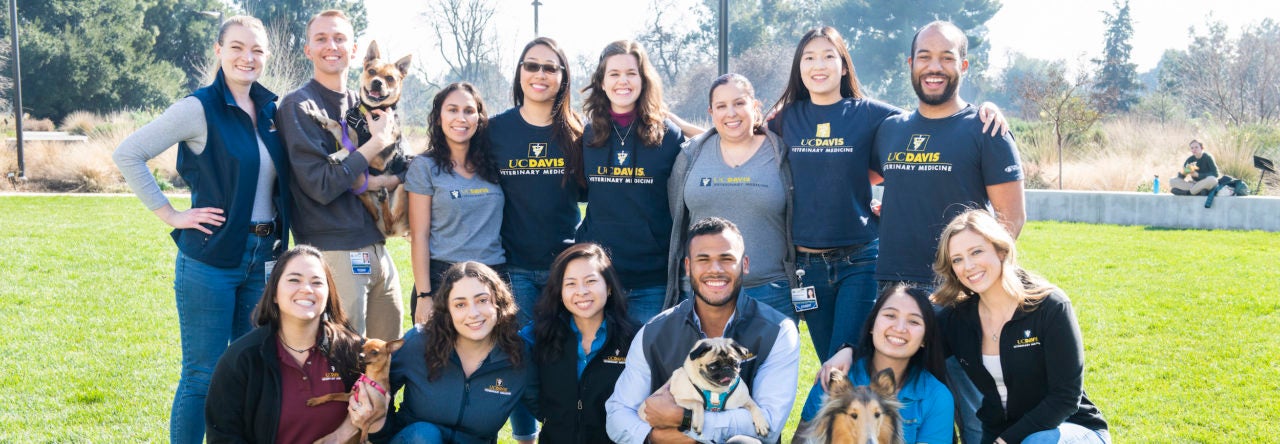“First comes thought; then organization of that thought, into ideas and plans; then transformation of those plans into reality. The beginning, as you will observe, is in your imagination.” – Napoleon Hill
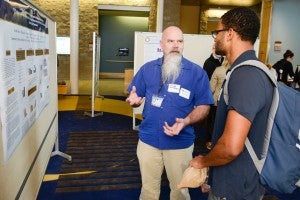 We live in a world that constantly changes, challenging us to evolve with it. Our school is undergoing such a transformation, reflected in improvements in our medicine and science, new educational models, and students challenging learning paradigms. In our daily lives outside of work we observe economic, environmental, and societal forces seemingly beyond our control. New infectious diseases, climate change, and a moving political landscape are a few examples of change to which we must adapt, today and in the future.
We live in a world that constantly changes, challenging us to evolve with it. Our school is undergoing such a transformation, reflected in improvements in our medicine and science, new educational models, and students challenging learning paradigms. In our daily lives outside of work we observe economic, environmental, and societal forces seemingly beyond our control. New infectious diseases, climate change, and a moving political landscape are a few examples of change to which we must adapt, today and in the future.
A recent report from the University of California, Office of the President (UCOP), is focused on the future of veterinary medicine, and projects an “Era of Change.” I would encourage all of you to read the report and reflect on its findings and recommendations. Veterinary medicine, biomedical and agricultural sciences are in a dynamic period of change that will bring new opportunities and challenges to all of us. The UCOP report illustrates current veterinary workforce data and future opportunities that will help guide the University of California forward to enhance the health sciences workforce. The report illustrates the critical role that veterinarians have in addressing the health needs in our society as well as the leadership position of the UC Davis School of Veterinary Medicine.
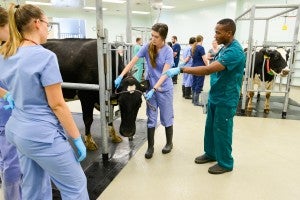 The report summarizes the current distribution problem in our veterinary workforce, with an unbalanced proportion of students entering small animal medicine. This leaves an unmet demand for veterinary services in other sectors in California and across the globe. While employment of veterinarians is expected to grow by 12 percent between 2012 and 2022, it will be incumbent upon us to recruit and educate veterinarians to meet the future needs in our society, rather than resist change and produce veterinarians for a crowded market in limited areas.
The report summarizes the current distribution problem in our veterinary workforce, with an unbalanced proportion of students entering small animal medicine. This leaves an unmet demand for veterinary services in other sectors in California and across the globe. While employment of veterinarians is expected to grow by 12 percent between 2012 and 2022, it will be incumbent upon us to recruit and educate veterinarians to meet the future needs in our society, rather than resist change and produce veterinarians for a crowded market in limited areas.
The report recognizes that veterinary educational costs and student debt have rapidly increased, yet salaries for veterinarians have not kept pace. This finding inspires us to continue our strong efforts in raising scholarship funds for our students, limiting tuition increases, and seeking new revenue sources to fund the very real costs of delivering a world class education for our students.
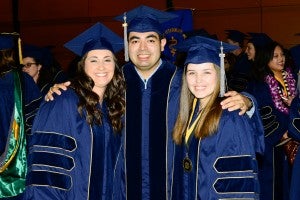 The report observes that the emerging One Health approach unites veterinarians, physicians and other scientific health and environmental professionals in a collaborative effort that recognizes the vast interrelationships between human, animal and environmental health. (See this recent story on novel stem cell therapy for cats as an example of how veterinary medicine may translate to improved human health.) Despite this, in California, opportunities to obtain a veterinary education are restraining and many California residents attend veterinary schools out of state or outside of the U.S.
The report observes that the emerging One Health approach unites veterinarians, physicians and other scientific health and environmental professionals in a collaborative effort that recognizes the vast interrelationships between human, animal and environmental health. (See this recent story on novel stem cell therapy for cats as an example of how veterinary medicine may translate to improved human health.) Despite this, in California, opportunities to obtain a veterinary education are restraining and many California residents attend veterinary schools out of state or outside of the U.S.
Additionally, we face a need to continue to renew our faculty, which is challenging due to declining state support and a competitive environment for federal funding for research, which has kept faculty salaries from progressing, caused reductions in hiring, and eliminated programs during the last recession. By 2016, it is estimated that more than 10 percent of faculty positions will be vacant nationally. Another emerging trend is the increasing number of veterinarians pursuing specialty training. Our school has the largest specialty training program in the world and will continue to be at the forefront of educating specialists.
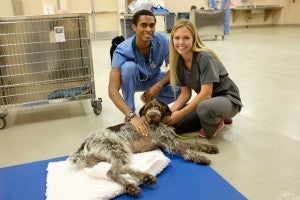 Unfortunately, despite our recent efforts, the veterinary workforce, students and faculty do not reflect the ethnic diversity of California. While we are highly ranked in diversity in veterinary medicine, we must continue to advance our programs to attract and retain a student population and diverse workforce to be relevant in our evolving society.
Unfortunately, despite our recent efforts, the veterinary workforce, students and faculty do not reflect the ethnic diversity of California. While we are highly ranked in diversity in veterinary medicine, we must continue to advance our programs to attract and retain a student population and diverse workforce to be relevant in our evolving society.
The discovery of new knowledge is critical to improve the health of animals and people. This goal is influenced by evolving attitudes, policies and relationships of animals used in veterinary education and research, a focus of a review written by Dr. Jan Ilkiw and me, recently published in the Journal of Veterinary Medical Education.
We continue to lead among veterinary schools and colleges in research funding and remain an international force generating new discoveries in veterinary medicine and science. Practitioners and public health professionals directly rely on this new information and its application to improve animal and human health. Our California Animal Health and Food Safety Laboratory (CAHFS) system will continue to play a vital role in our economy and the protection of our food supply and public health. The CAHFS system is only one of our many partnerships that will be important for us to nurture as we feed a hungry world expected to reach over 9 billion in the coming decades.
As we look to our future, we must keep evaluating our progress in meeting our vision to lead veterinary medicine and address societal needs through a clear lens that recognizes the ever-changing landscape of our workforce, educational trends, and the needs of the planet. Our strategy must be to imagine the world and plan effectively, knowing these future trends. If we follow this approach, we can transform veterinary medicine and science into a positive force of change and remain a global leader in veterinary education, research, and service to the world.
